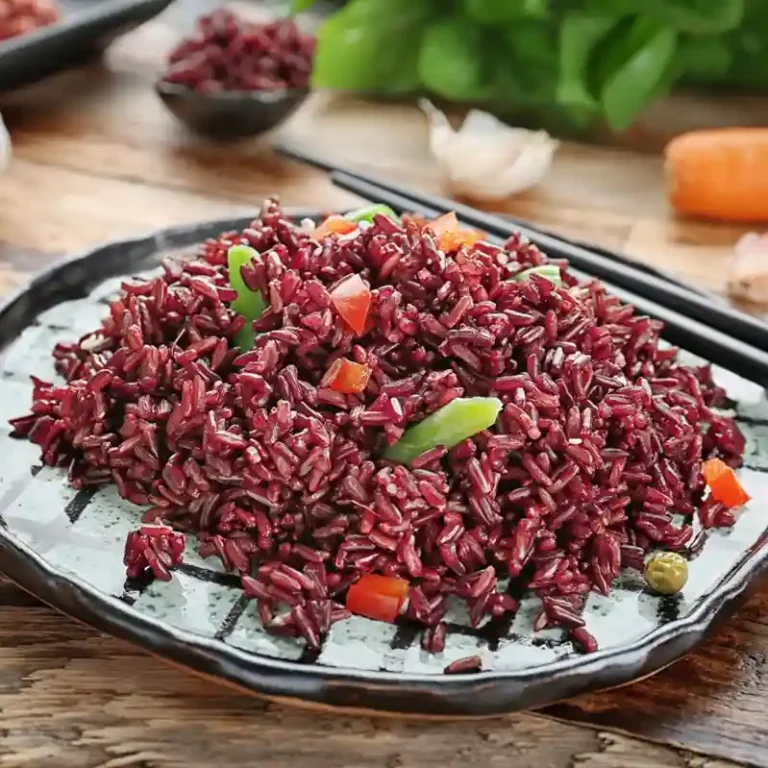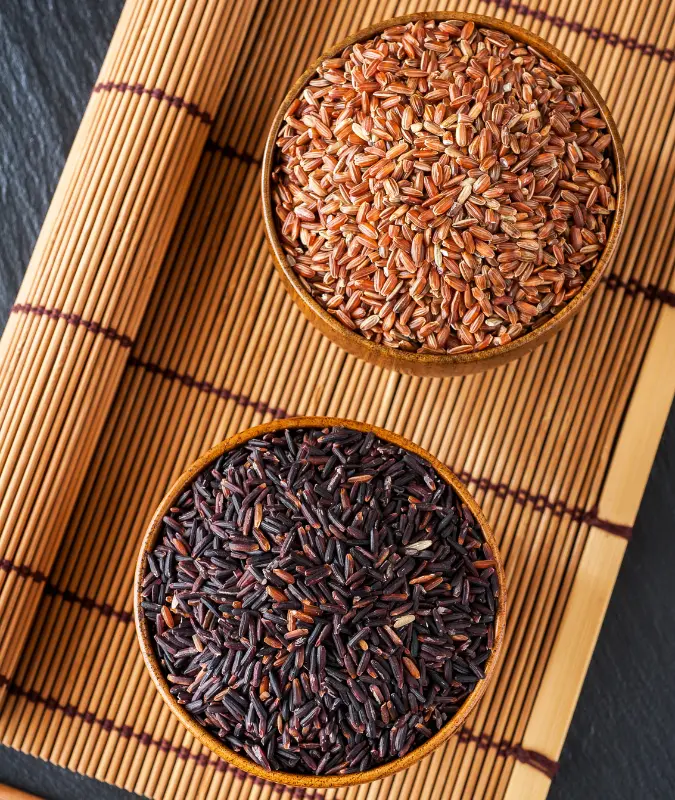Red Rice: Red Rice Health Benefits and Recipes
Indeed, the world we live in is a vibrant and colorful place. Fortunately, these colors extend to the food we eat on a daily basis. Rice, in particular, comes in different colors and hues with extensive health benefits. With about 40,000 rice varieties, the most popular ones in the market are white, brown, and black rice. However, a new rice variety, red rice, has recently gained a lot of attention in the fitness world. While every rice variant has its own benefits and goodness, let’s learn about the This rice variety in this article.

What is Red Rice?
Certainly, the color is the major aspect when it comes to the name of this rice variety. However, there is more to this grain than just its color. This rice is one of the many rice varieties. It is known for its reddish color received from an antioxidant known as anthocyanin. This compound is found in various purple and red colored vegetables.
It is available in full hull and moderately hull variants. This rice is preferred for its nutty flavor and high nutritional value compared to polished rice.
Red Rice Nutrition
When it comes to rice varieties eaten with the outer hull, This rice is the most nutritious one. In the Indian medicine idea of Ayurveda, red rice is called Rakthashali and is preferred for its potential to calm all three ‘doshas’ or ailment roots of Vaata, Pitta and Kapha.
Here is the nutritious value of a 100g serving of rice:
- Calories: 109
- Fat: 0.8g
- Carbohydrates: 23g
- Fibre: 1.8g
- Sugar: 1g
- Protein: 23g
This rice is ultimately a nutritious powerhouse, filled with the goodness of carbohydrates, proteins, mono-unsaturated fatty acids, polyphenols like vanillic acid, ferulic acid along with vitamins and minerals like zinc, iron, etc.
Red Rice Varieties
Here are the three major and widely used This rice varieties in Indian cuisines:
- Kerala Matta rice
It is the rice variety that can be found in almost every household. Kerala Matta is locally known as the Palakkadan Matta Rice or Kerala Red Rice. It is popularly eaten as you can pair this rice with every dish, even the local cuisines and make the most out of it. This rice variety has a unique taste and high nutritional value.
- Thai Red Cargo rice
Unlike other red rice varieties, it has characteristics more similar to brown rice, like having long & slender grains and intense flavor. This rice comes in purple, red and maroon hues. It is majorly used in Thai cuisines all over the world. When cooked, it has a nutty and sweet flavor with a chewy texture.
- Bhutanese Red rice
This rice is partially milled with a vibrant red color. It is a popular choice of rice because of its unique traits. When fully cooked, this rice appears to be a shallow pale color.

Benefits of Red Rice
Undoubtedly, This rice has lots of benefits ranging from organ health to skincare and more. A few of these benefits are listed below:
- Reduces Blood Glucose
It’s a well-known fact that high blood sugar levels can have adverse effects on your health and disrupt the functioning of major organs like the liver, eyes, heart and kidneys. Most importantly, the glycemic index of this rice is evaluated at about 55, which makes it a perfect rice option for diabetics.
- Supports Digestion
This rice is an excellent source of both soluble and insoluble fiber. That’s the reason why it is recommended for people with digestive problems. Moreover, digestive fiber plays a vital role in managing digestion, easing bowel movement and optimum absorption of nutrients. When this rice is cooked well and consumed, it helps in aiding both constipation and diarrhea.
- Strengthens Immunity
It has antioxidants and magnesium, which help in aiding and preventing numerous diseases. Moreover, it also has selenium, which allows the body to withstand various infections.
- Maintains Heart Health
It is a fact that high levels of bad cholesterol are one of the leading causes of numerous heart-related ailments. Moreover, at times, clogged arteries can result in heart attacks and can be dangerous. Most doctors recommend switching from white rice to This rice, which makes the heart healthy. As the rice is a whole grain, it breaks down the bad cholesterol in the body, protecting the heart.
- Improves Lung Health
Due to its magnesium content, eating this rice regularly prominently improves oxygen circulation, which helps prevent asthma. It boosts breathing capacity and oxygen circulation throughout the body. This rice also improves pulmonary function, general mood, and energy levels.
- Red Rice vs Brown Rice
Red rice has more antioxidants than brown rice. It is also an excellent source of selenium, which protects the body against various infections. Besides, brown is known to be a great source of iron and zinc with other kinds of nutrients. Taking this into consideration, both red and brown rice are healthy options for consumption. Though to this rice has an element called Monacolin K., which promotes lowering LDL levels or bad cholesterol. Hence, this is a wise choice for individuals who want to maintain their cardiovascular health.
- Red Rice vs White Rice
Even though white rice takes less time to cook compared to red rice, the health benefits of white are way less than red rice. It is so because the nutritional profile of white rice is less than the unpolished and unhulled rice variety. Moreover, white rice has high levels of triglycerides and results in high blood pressure and weight gain. It also has low levels of HDL cholesterol or good cholesterol.
- Red Rice Vs Black Rice
The most prominent difference between red rice and black rice is their colors. Both rice is unmilled or semi-milled, and rice is in fiber, protein, and other nutrients. However, red rice has a little more protein, while black rice has a little more fiber.
- What’s the Right Way to Consume Red Rice?
All you have to do is soak the rice in a big bowl for about an hour before cooking. It will majorly help you get rid of any dirt, dust or other particles. Next, add water to the ratio of 1:4 (about 4 cups of water for one cup of rice) and boil.
After the water boils, put the rice on low flame and cook for about 20 minutes, covering the head of the vessel with a lid. When the rice is cooked, drain the water, and the rice is ready to eat.
Conclusion
Hopefully, now you know what to add to your everyday diet to bring variety to your meals. This rice is a perfect way to make healthy choices without compromising taste. Enjoy this versatile grain’s nutty and chewy texture paired with your favorite curry or dal.



